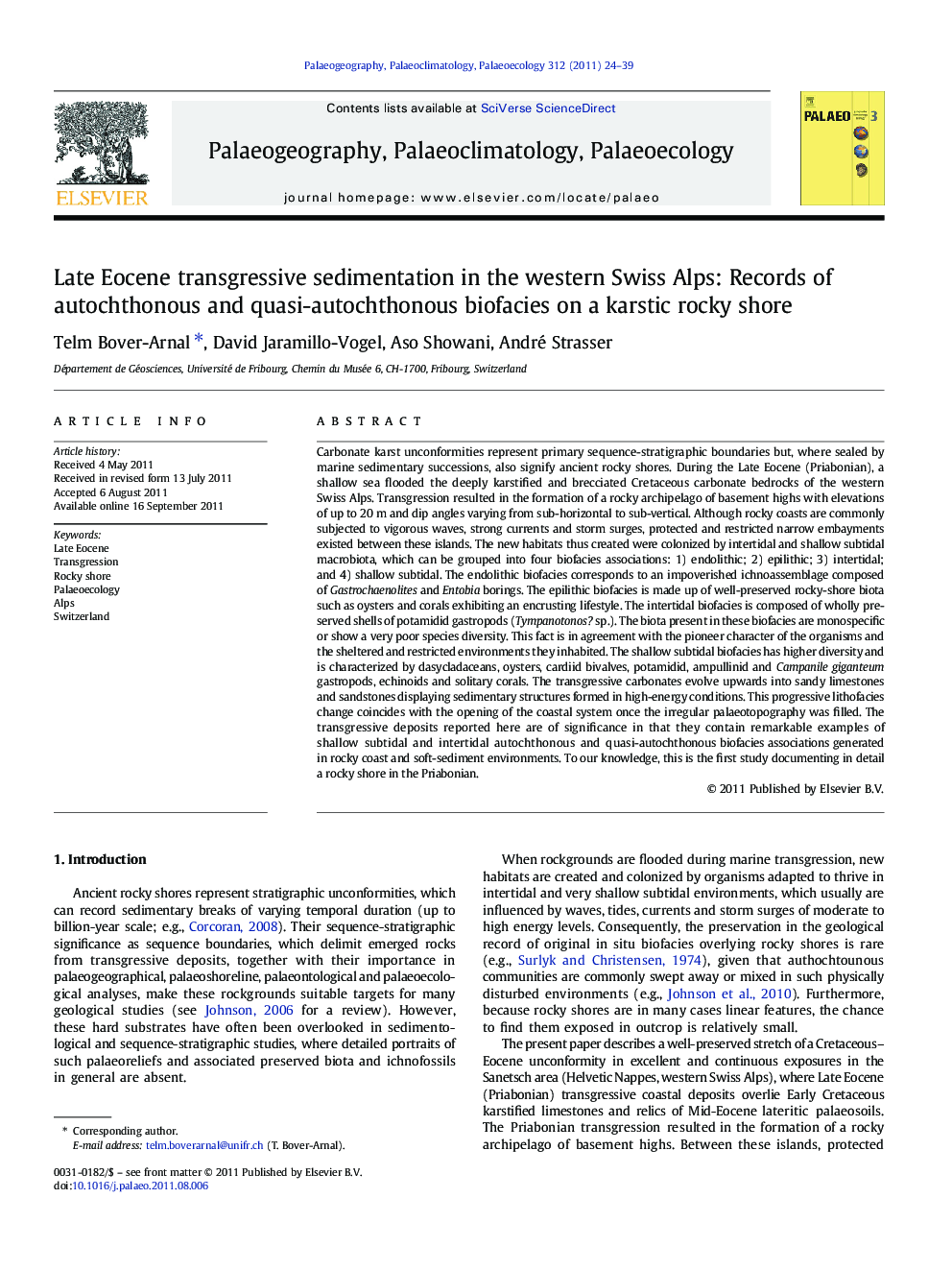| کد مقاله | کد نشریه | سال انتشار | مقاله انگلیسی | نسخه تمام متن |
|---|---|---|---|---|
| 6350590 | 1622244 | 2011 | 16 صفحه PDF | دانلود رایگان |

Carbonate karst unconformities represent primary sequence-stratigraphic boundaries but, where sealed by marine sedimentary successions, also signify ancient rocky shores. During the Late Eocene (Priabonian), a shallow sea flooded the deeply karstified and brecciated Cretaceous carbonate bedrocks of the western Swiss Alps. Transgression resulted in the formation of a rocky archipelago of basement highs with elevations of up to 20Â m and dip angles varying from sub-horizontal to sub-vertical. Although rocky coasts are commonly subjected to vigorous waves, strong currents and storm surges, protected and restricted narrow embayments existed between these islands. The new habitats thus created were colonized by intertidal and shallow subtidal macrobiota, which can be grouped into four biofacies associations: 1) endolithic; 2) epilithic; 3) intertidal; and 4) shallow subtidal. The endolithic biofacies corresponds to an impoverished ichnoassemblage composed of Gastrochaenolites and Entobia borings. The epilithic biofacies is made up of well-preserved rocky-shore biota such as oysters and corals exhibiting an encrusting lifestyle. The intertidal biofacies is composed of wholly preserved shells of potamidid gastropods (Tympanotonos? sp.). The biota present in these biofacies are monospecific or show a very poor species diversity. This fact is in agreement with the pioneer character of the organisms and the sheltered and restricted environments they inhabited. The shallow subtidal biofacies has higher diversity and is characterized by dasycladaceans, oysters, cardiid bivalves, potamidid, ampullinid and Campanile giganteum gastropods, echinoids and solitary corals. The transgressive carbonates evolve upwards into sandy limestones and sandstones displaying sedimentary structures formed in high-energy conditions. This progressive lithofacies change coincides with the opening of the coastal system once the irregular palaeotopography was filled. The transgressive deposits reported here are of significance in that they contain remarkable examples of shallow subtidal and intertidal autochthonous and quasi-autochthonous biofacies associations generated in rocky coast and soft-sediment environments. To our knowledge, this is the first study documenting in detail a rocky shore in the Priabonian.
⺠Priabonian (Late Eocene) karstic rocky shore. ⺠Priabonian transgressive sedimentary record. ⺠Autochthonous and quasi-autochthonous coastal biofacies.
Journal: Palaeogeography, Palaeoclimatology, Palaeoecology - Volume 312, Issues 1â2, 1 December 2011, Pages 24-39